Arriving in the Loire Valley
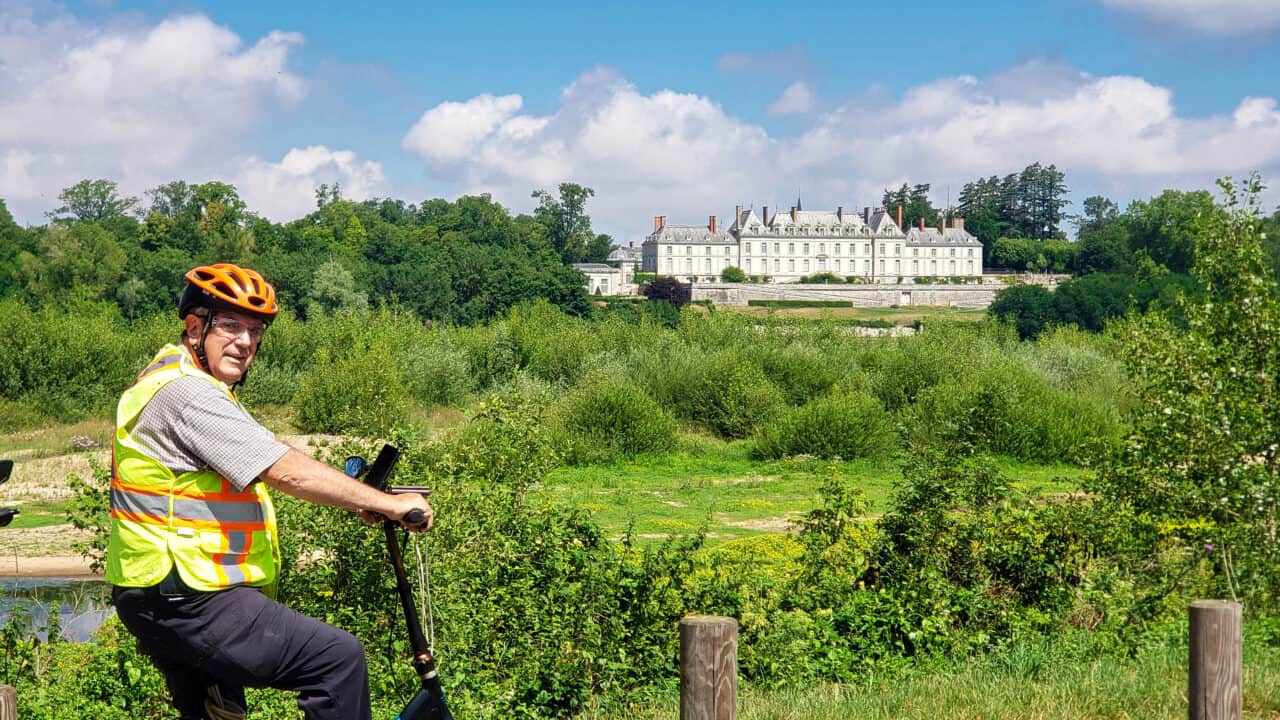
Mike and I are now camping on the Loire River near Blois. This is the longest river in France and this area is filled with the phenomenal châteaux that the Loire Valley or France’s ‘Valley of Kings’ is rightly famous for.
We arrived here a little earlier than expected. We left one campground after we found out that it wouldn’t reliably run our air conditioner in the midst of a massive heat wave. The actual temperatures were over 40°C or 100°F and the humidex was even higher. That was no fun and contributed greatly to our lack of energy that delayed this article from being written which in turn has made this a little long. My apologies. On the way north from the Mediterranean we spent 5 nights in Massiac and two nights in the town of Bruère-Allichamps before we left abruptly for Blois where we are now staying. This campground has excellent electricity (16 amps equivalent to 32 amps in North America).
On our first full day in Massiac the temperature dropped down to 22° C or 72° F which was phenomenal. We spent a great day cycling up in the mountains. We cycled through a medieval village with absolutely gorgeous views all around. It was a great temperature and fun riding.
As the weather heated up again we decided that the best thing to do was to go for a long air conditioned car ride. Driving around and visiting small hilltop villages and towns like Saint-Flour was fun.
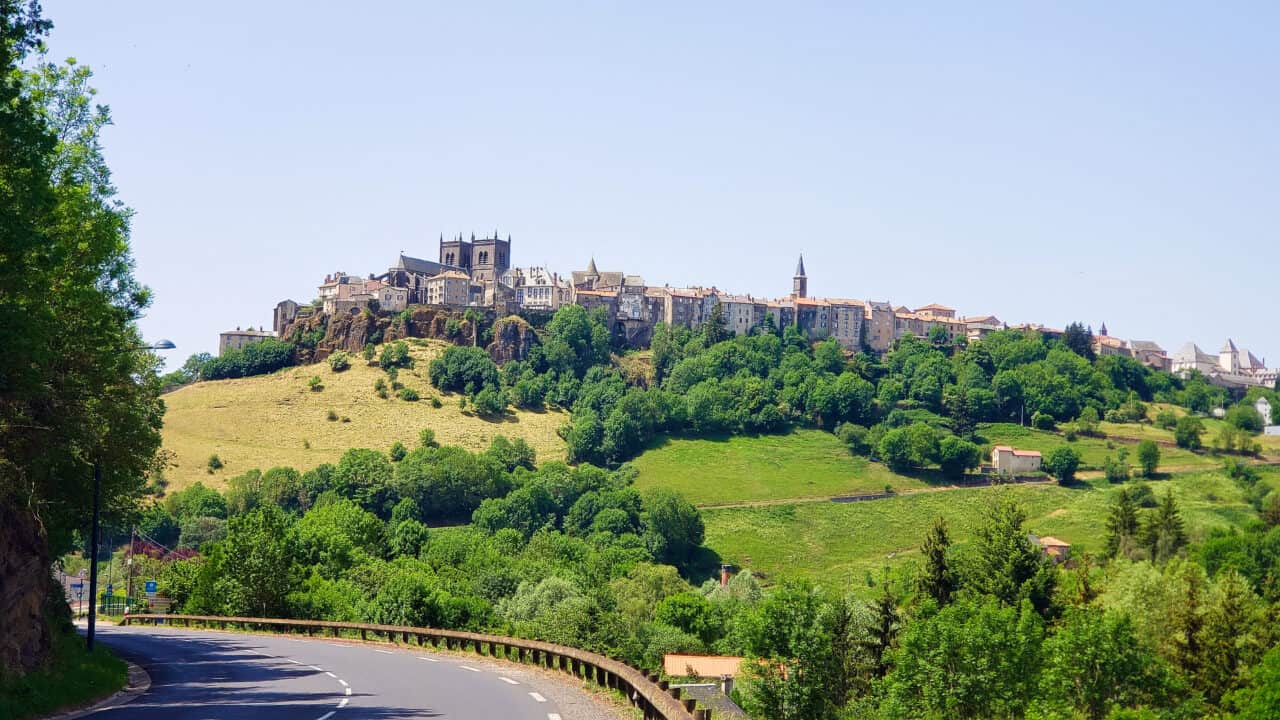
We ended up in the town of Le Puy. We made the absolutely silly decision to climb many, many stairs to see inside the Cathédrale Notre-Dame-du-Puy which is a national monument. You can’t actually tell from the picture how many levels of stairs you are looking at. Remember that it was very hot and my knees are definitely not in good shape anymore. We made the climb and walked through the archway thinking that we were going into the church. We were wrong. We were then at the bottom of another long set of stairs that eventually opened up in the middle of the church which was a little unusual.
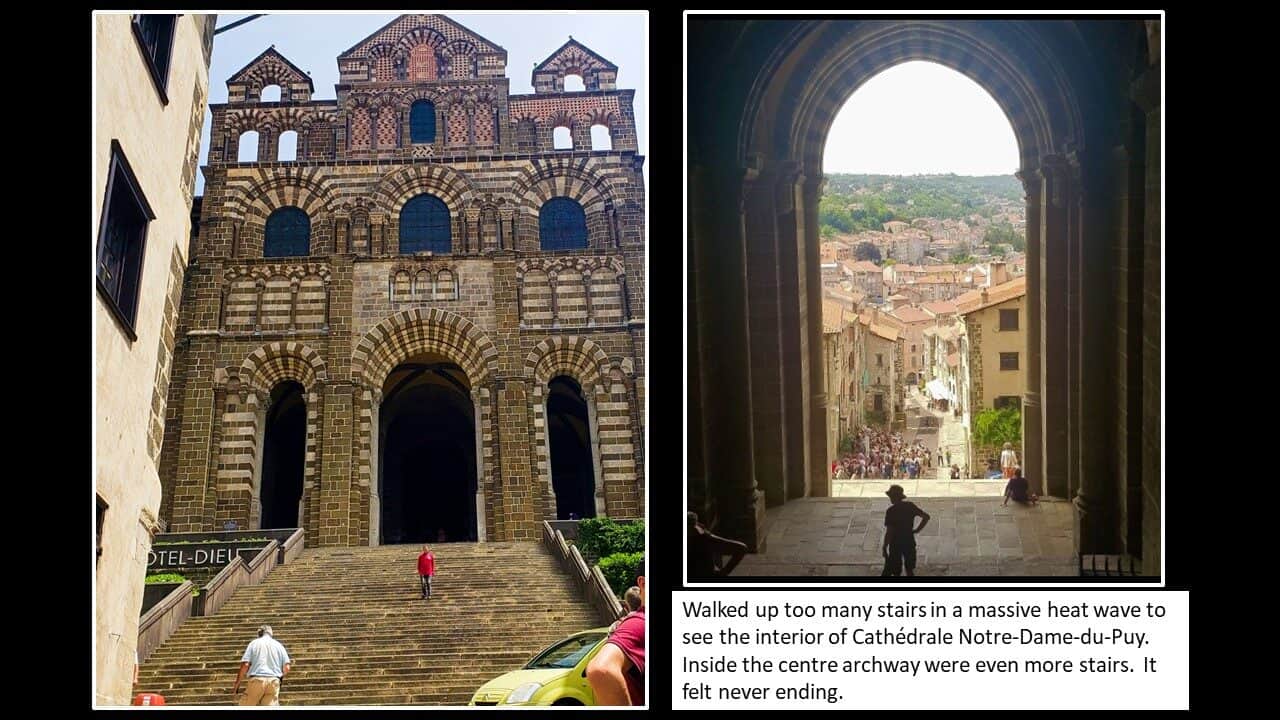
As we were leaving Le Puy we could see the Rocher Saint-Michel d’Aiguilhe or the Rock of St. Michael. It is 82 metres or almost 300 feet high and the top can be reached by stairs. It is dedicated to Archangel Michael and was formed over two million years ago (the rock not the church 😊). We could actually see parts of a stairway going up. We had just left the Cathédrale Notre-Dame-du-Puy with its stairs and never even considered trying to scale this rock. In actual fact, even if it had been cold and we had felt really energetic we would not have attempted this climb any more.
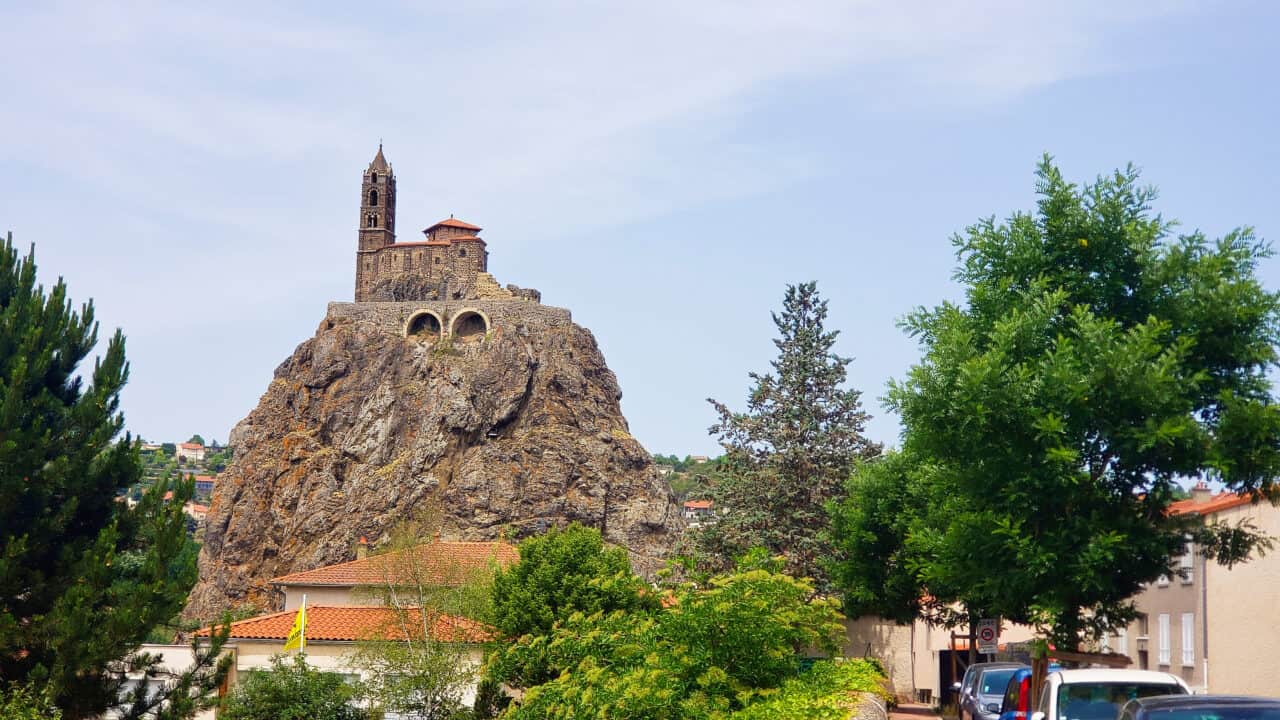
The Loire River, also known as the Royal River in the past, is the longest river in France. We were really disappointed to find out that it is the least navigable for all France’s major rivers, even for our little boat. It meanders over a very wide area and is sometimes only 25 cm deep although during flooding, the river rises rapidly.
We are camping about 4 km from the town of Blois which is a lovely town with it’s own Royal Château and much more. I will tell you about Blois in my next article. We will be here for a while.
The area of the Loire River between Orléans and Nantes, a city near the Atlantic Ocean, is known as the Loire Valley. 30 years ago Mike and I toured the Loire Valley in a rented camper. We really enjoyed visiting many of the châteaux open to the public. The only negative is that there are too many in one area for continued enjoyment.
June 21, in addition to being my mother’s birthday (Happy Birthday Mum), is World Music Day and is well celebrated in this part of the world. It turned out that the weather was predicted to be very wet on June 21 so instead of cycling into Blois for the various evening music festivals we decided to visit Orléans. If it rained we would be in the car most of the time. We had originally thought that we might camp in Orléans but decided to go west to Blois instead. Orléans is considered the Gateway to the Loire Valley and is about an hour’s drive from where we are camping. When the weather is bad and we want to get out, we take the car somewhere a reasonable distance away.
Our first introduction to Orléans wasn’t great. We saw about 8 police officers patrolling the streets in formation with rifles. That made us feel uncomfortable. Whether the French parliamentary elections in process had anything to do with this I don’t know. We only saw this group of police once so we quickly forgot about them.
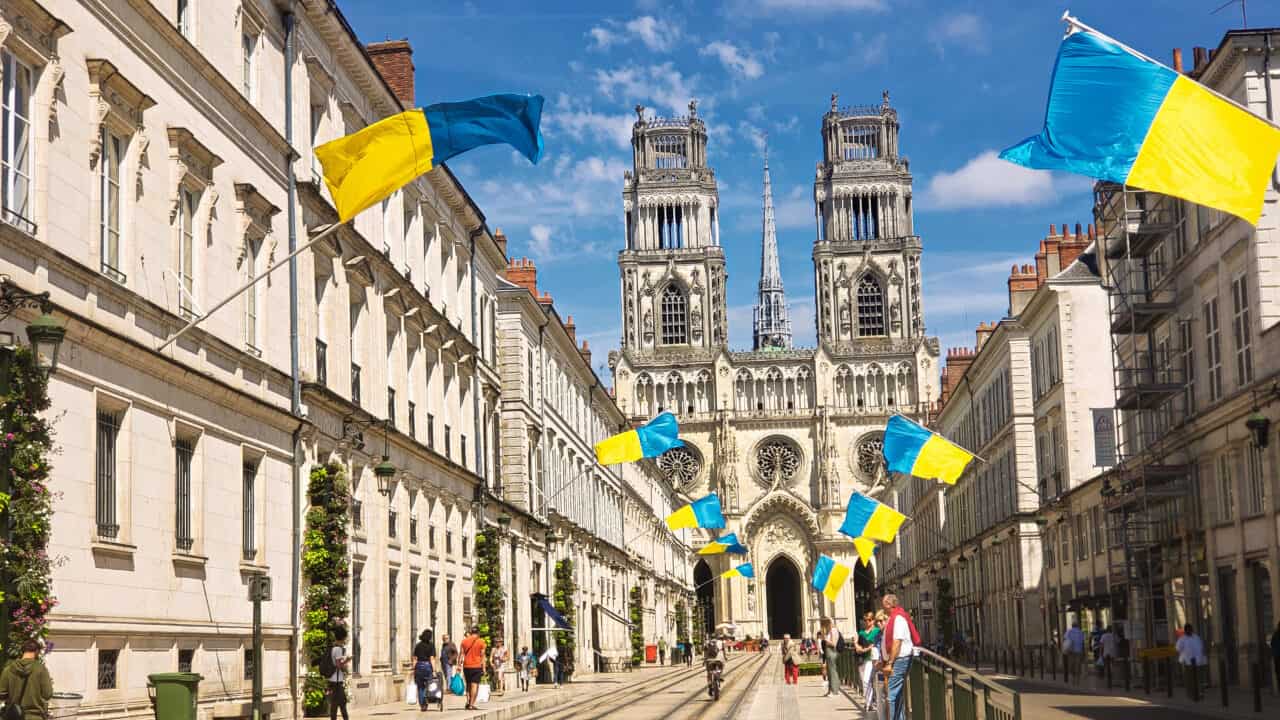
The Cathédrale Sainte-Croix d’Orléans is phenomenal. The architecture is unbelievable. The statues, paintings and carvings along with beautiful stained glass windows that always tell a story, are great. The problem is that places like this remind me a little of when Mike and I toured the historic homes in England many years ago and felt very uncomfortable with the huge discrepancies between the exorbitantly rich few and the many. The over the top buildings, including so many of the churches in Europe, just brings this home. You can understand the emotions that might have led to the French Revolution. On the other hand, these homes and châteaux and cathedrals really are gorgeous to visit.
As you can see, the street leading up to the cathedral was full of Ukrainian flags. I have a similar problem with seeing a street like this as I do when I see flags flying at half mast. I completely understand the events that cause flags to be flown at half mast but when do you raise them. Sometimes it seems like you are saying, this event that was so important isn’t as important any more. After a mass shooting in the US, when do you raise the flags? When do you remove the Ukrainian flags and yet still say we support you? I don’t know the answers.
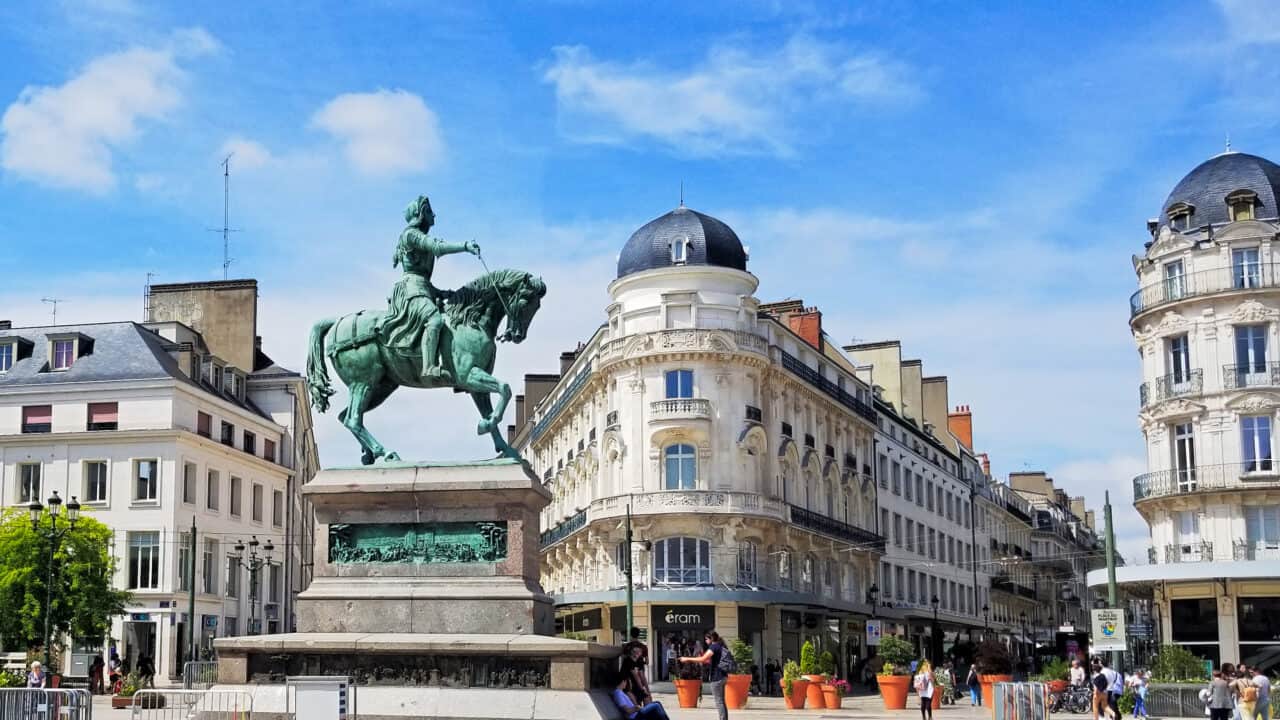
As I have mentioned before, you see carousels everywhere in this country. This one is just in a square in Orléans.
The statue above is the Maid of Orléans or Joan of Arc (Jeanne d’Arc). Tributes to her are found all over the city. During the Hundred Years War, when she was a teenager Joan had visions that instructed her to support Charles and recover France from the English domination. When she was only 17 years old Charles sent Joan to the siege of Orléans as part of a relief army. The siege was lifted 9 days later. Troops followed Joan for the next two years, convinced that she was blessed by God. At the age of 19 Joan was captured and convicted by the English as a heretic (later overturned). She was burnt at the stake in 1431. Nearly 500 years after her death, she was canonized as a saint by the Roman Catholic Church.
Orléans is a beautiful town. We only spent one afternoon here and could easily have spent longer.
Many of the cities here have sound and light shows at night. In Orléans the façade of the Cathedral is used as the back drop for the light show. In one town we visited there was a light show on buildings in seven different locations in the town. For us the problem is that many of these light shows don’t start until very late at night. It is still light here after 22:00h or 10pm. The Orléans light show doesn’t start until 11:30 pm at night. Unless we happen to be staying right in the town (easy walking distance) with the light show the chances aren’t good that we will actually see one. I am hoping that we might cycle into Blois for their show one night. We will let you know if this happens.
I have just been reading about a huge festival of lights that is billed as the “Largest light, sound and multimedia show in the world” and it is coming to our hometown in Canada. It will run from mid-September this year until early January 2023. At that time of year it gets dark much earlier and we will certainly get to visit that light show when we are home.
When we first arrived at the Loire Valley we took our bikes out for a short ride and the photograph at the top was one of the first views that we came upon as we rode alongside the river. It really keeps the rides interesting when you see sites like this. I looked it up afterwards. Château de Ménars is private and not open to the public. In 1760 Ménars was acquired by Madame de Pompadour, the favorite of King Louis XV. She died four years later. A real estate developer purchased the château for about two million Euros in 1983. He put over 100 million Euros into renovating the château and listed it for ONLY 31.5 million. Shortly after listing it for sale the owner died and I am not sure what the current status is.
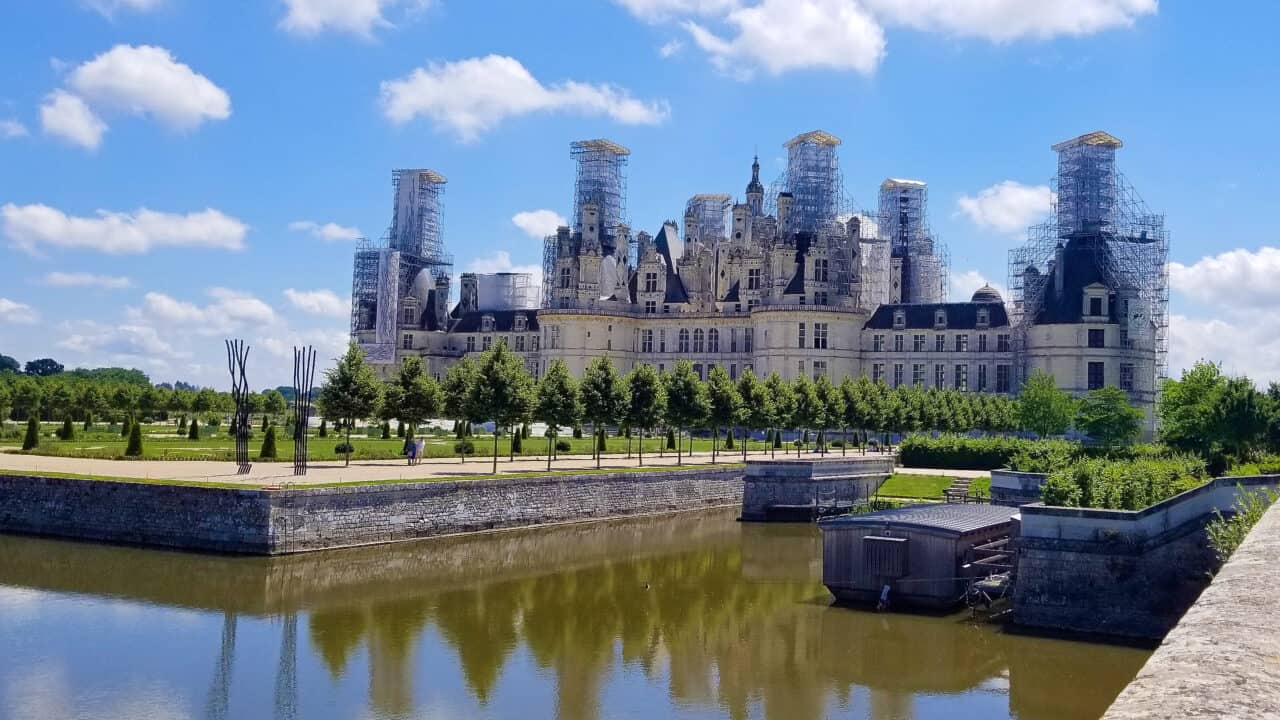
Yesterday Mike and I cycled to the Château de Chambord. We made sure to visit Chambord on a week day to avoid the weekend traffic (since we are retired). What we hadn’t counted on were all the school groups that were touring the Château.
Mike says that the one thing that he remembered about Chambord from 30 years ago was the double helix stairway that Da Vinci is thought to have designed or inspired. The Chambord staircase has two separate spirals so that two people can use the staircase at the same time without running into one another!
Mike and I rented tablets with a self-guided audio visual tour of the Château. We should have been suspicious when a map of the château highlighted a few of the rooms and said that if you only wanted an hour long tour, these were the rooms to visit. With dozens of chimneys, cupolas, gables and towers reaching 56 metres into the air, and 440 rooms, 365 fireplaces and 84 staircases within, Chambord is the largest château in the Loire Valley. It took us hours to tour this with this guide. I felt like I had spent an entire day at the Louvre. In others words we were both pretty tired and exhausted and still had 20 km (12 mi) to bike back to the campground. Luckily the ride back was often under trees in the shade which was nice and cool.
When we arrived at Chambord I had asked about the “Horse and Birds of Prey” show that I had seen on the internet. Apparently it was only held in the mornings and we missed it. Many of these châteaux try to do different things and hold various events to differentiate themselves from one another.
When the Germans invaded France in WW II the artwork was removed from many museums including the Louvre in Paris and sent out of the city for safe keeping. Chambord was a major distribution centre where artwork was sent, catalogued and then much of it was forwarded on. Supposedly a lot of the artwork remained hidden in Chambord. I don’t understand this and it is one of the few things that the internet hasn’t cleared up for us. I know that some of the châteaux were occupied by the Germans during the war. I have to believe that they visited and stayed at Chambord, after all who wouldn’t stay here? Given that, where and how was the art work hidden? I know that the Germans found and stole a lot of art but I haven’t read anything about them taking the works that were sent to this area. I am not sure how that worked.
The picture below was taken from the terraces at the top of the château. I love this architecture. Next you can see the recently restored formal gardens. This promises to be an interesting few weeks. We are hoping to cycle from Chambord, along the Loire River to Nantes near the Atlantic. If we have the time we might also continue north to the French coast along the English Channel. Who knows?
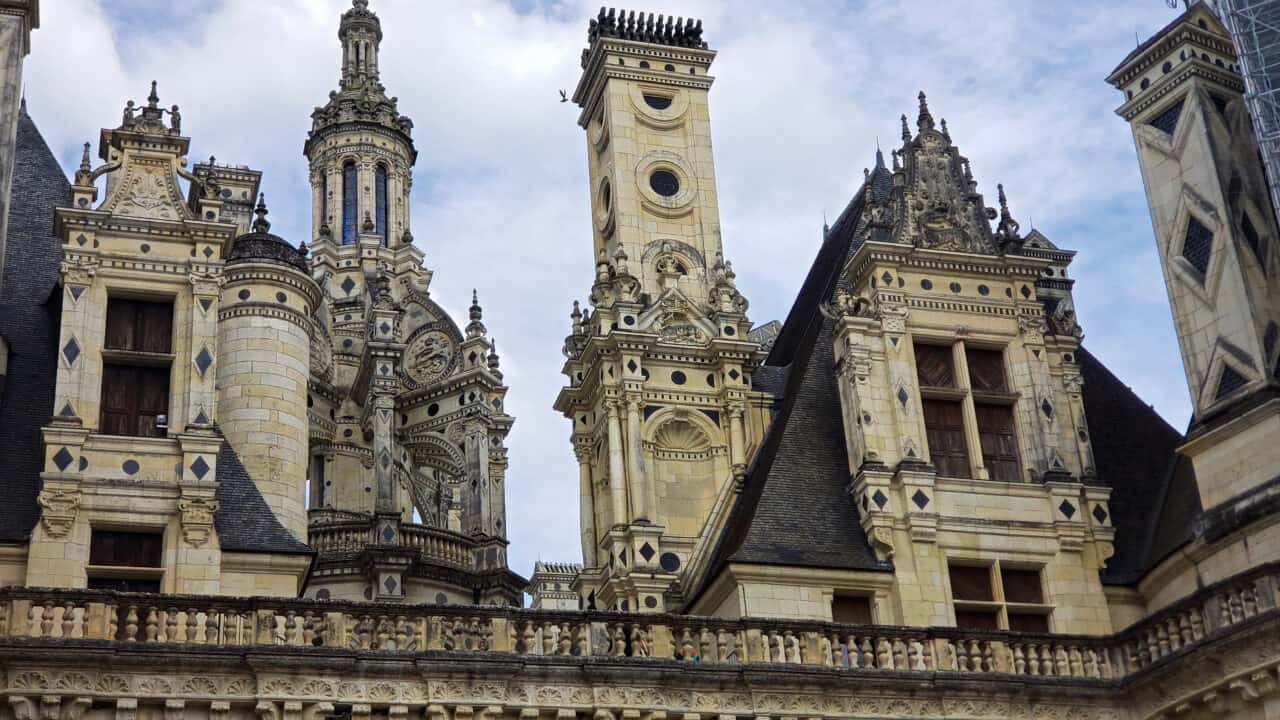
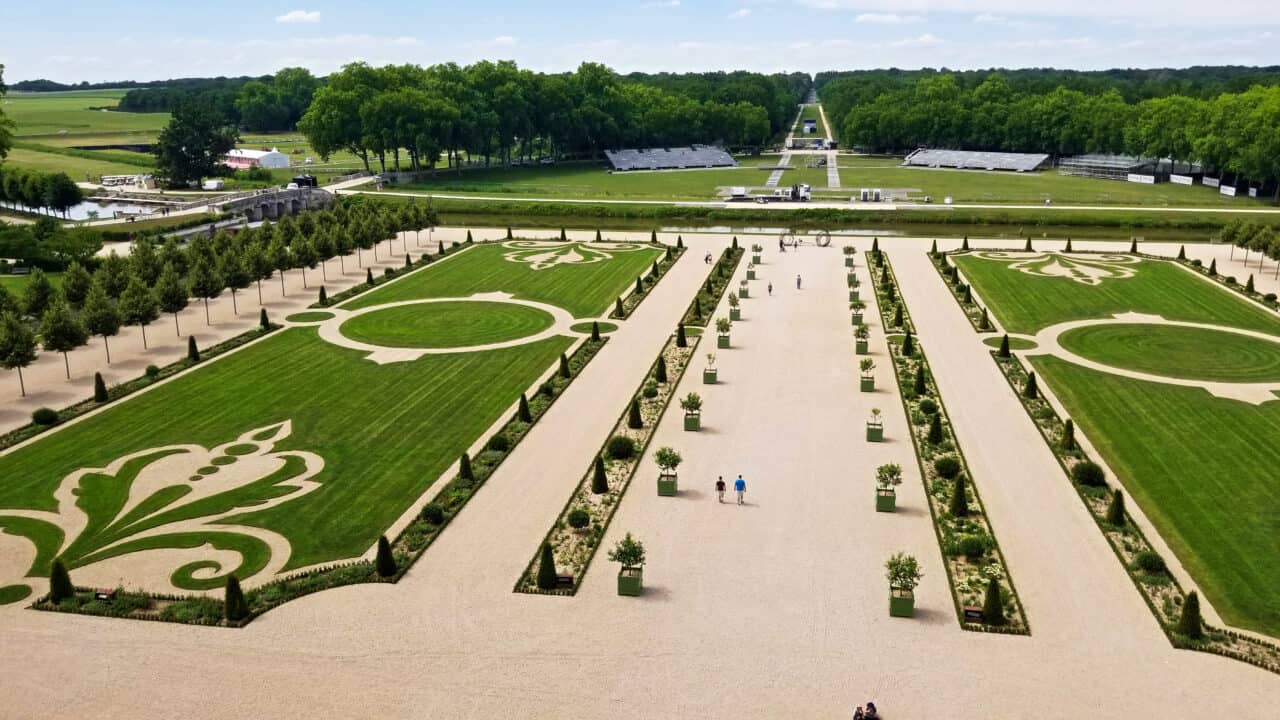

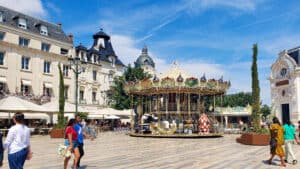
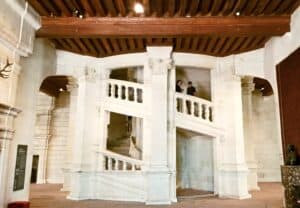
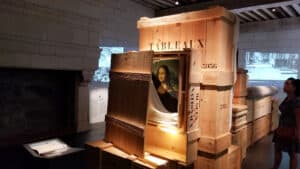
Leave a Reply